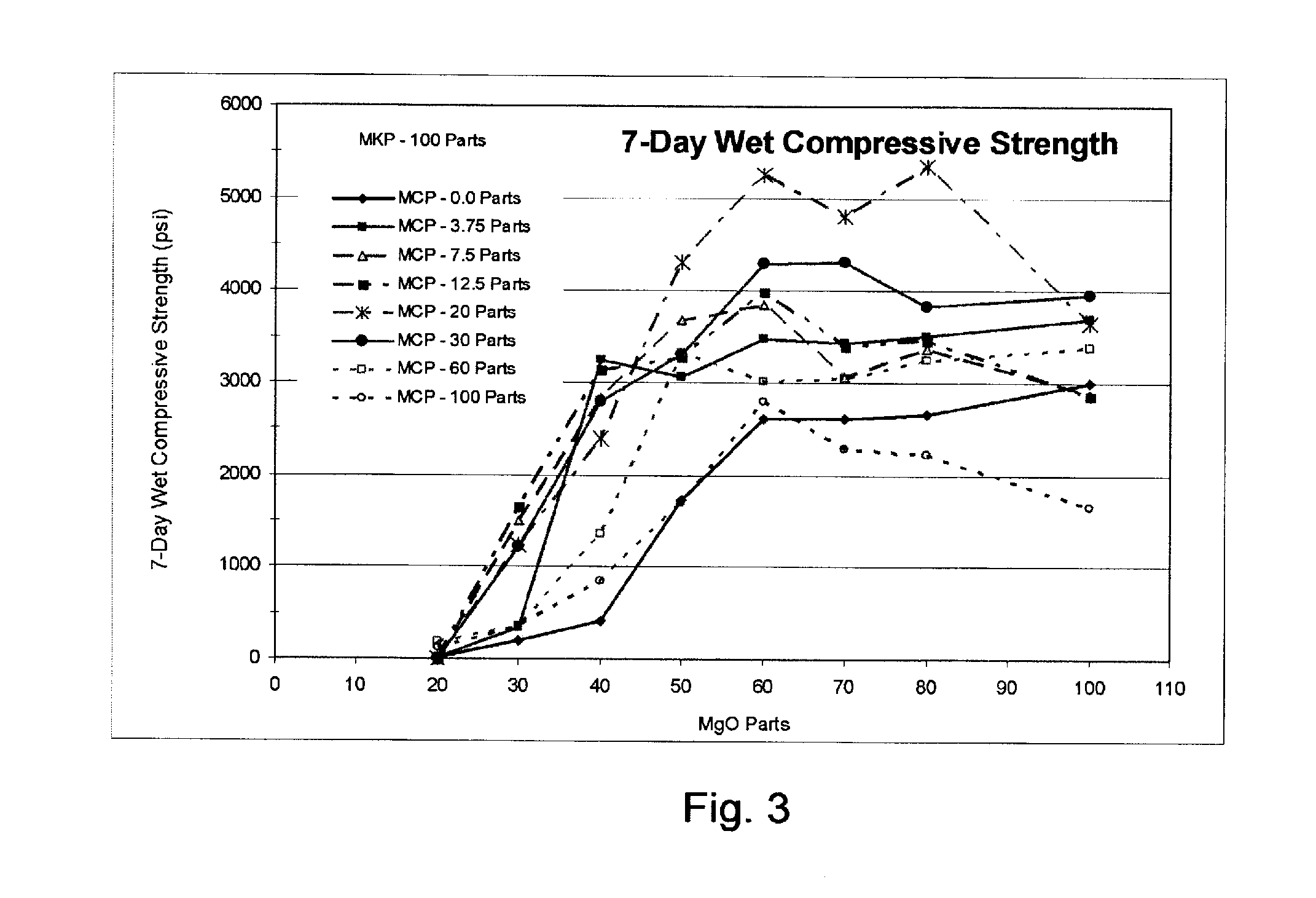High strength phosphate-based cement having low alkalinity
a phosphate-based cement, low alkalinity technology, applied in the direction of sustainable waste treatment, solid waste management, coatings, etc., can solve the problems of slow drying of cements, increased construction cost and time, and inability of sub-contractors to work, so as to improve the compatibility with other building materials, improve the ph, and reduce the corrosion
- Summary
- Abstract
- Description
- Claims
- Application Information
AI Technical Summary
Benefits of technology
Problems solved by technology
Method used
Image
Examples
example
[0033]A series of compositions were prepared to test the relative amounts of the acid phosphate salt, metal oxide and monocalcium orthophosphate binders in the mixture. Dead-burned magnesium oxide was selected as the metal oxide and monopotassium phosphate is an example of the acid phosphate salt. In addition the amounts of MKP, MgO and MCP shown in Table I, each cement sample also included 360 grams of a filler, known as FILLITE 500®, 450 grams of water and 12 grams of boric acid. In Table I, the column labeled “24 Hr.” is the 24 hour compressive strength in psi (newtons / square centimeter), “7 Day Wet” is the seven day wet compressive strength in psi (newtons / square centimeter) and “7 Day Dry” is the seven day compressive strength in psi (newtons / square centimeter). The pH reported is that of the hardened product material.
TABLE ITotalMgO / MKP7 Day7 DaySampleMKPMCPMgOBindersRatiopH24 Hr.WetDry1-11000201200.26.8126(87)14(10)61 (42)1-21000301300.36.8457(315)194(134)383 (264)1-310004014...
PUM
| Property | Measurement | Unit |
|---|---|---|
| Fraction | aaaaa | aaaaa |
| Time | aaaaa | aaaaa |
| Compressive strength | aaaaa | aaaaa |
Abstract
Description
Claims
Application Information
 Login to View More
Login to View More - R&D
- Intellectual Property
- Life Sciences
- Materials
- Tech Scout
- Unparalleled Data Quality
- Higher Quality Content
- 60% Fewer Hallucinations
Browse by: Latest US Patents, China's latest patents, Technical Efficacy Thesaurus, Application Domain, Technology Topic, Popular Technical Reports.
© 2025 PatSnap. All rights reserved.Legal|Privacy policy|Modern Slavery Act Transparency Statement|Sitemap|About US| Contact US: help@patsnap.com



